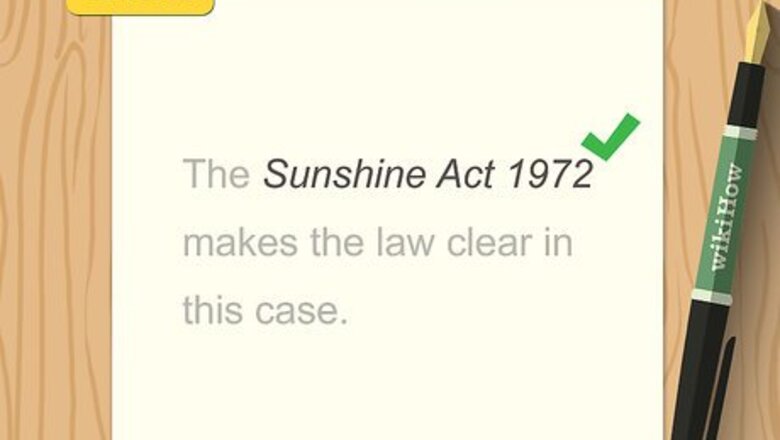
views
Using Oxford Style
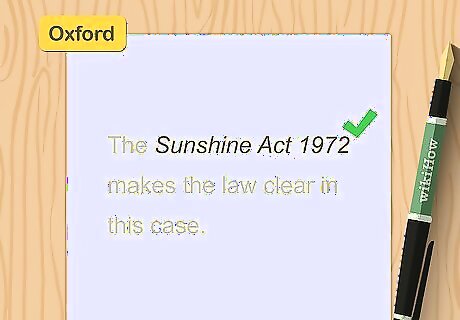
Make an in-text citation with the name of the act and the year. For acts created after 1962 by the UK Parliament, you just need the name and the year of the act. Put the name of the act and the year in italics, and place it in the main part of the sentence, not parentheses. Use the shortened form of the act, which is found at the end of the statute. For example, you might write: The Sunshine Act 1972 makes the law clear in this case. Some guides suggest you don't need to italicize the act's name, so check with your school or your teacher's guidelines.
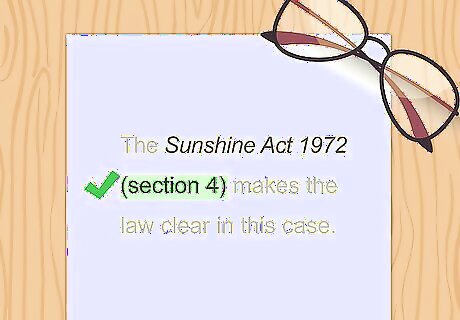
Add the section if you'd like to be more specific. You can put the section after the year to help others find the act. However, it's not absolutely necessary. If you do, write "section," followed by the number in parentheses. For instance, your citation will look like this one: The Sunshine Act 1972 (section 4) makes the law clear in this case.
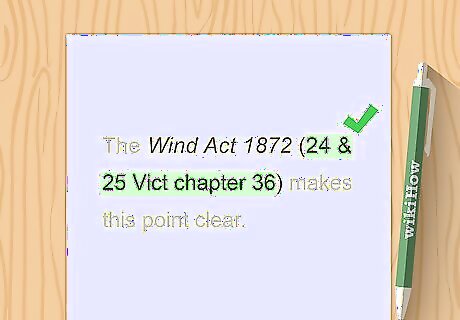
Put the volume and section numbers if the act was passed before 1962. Acts passed before this year were placed into volumes, which you should reference in your in-text citation. The volumes were divided by who was reigning at the time. You'll need the volume numbers, an abbreviation for the era, and the chapter in parentheses. For example, your citation would look this way: The Wind Act 1872 (24 & 25 Vict chapter 36) makes this point clear. If you're not sure of the abbreviation to use for the era, just use the whole name, such as "Victorian."

Use "HM Government" as the author in your bibliography. This stands for "Her Majesty's Government." If you're referencing another parliament besides the UK, use that government's abbreviation. So, for example, your reference would start out like this one: HM Government, Use a comma after "HM Government."
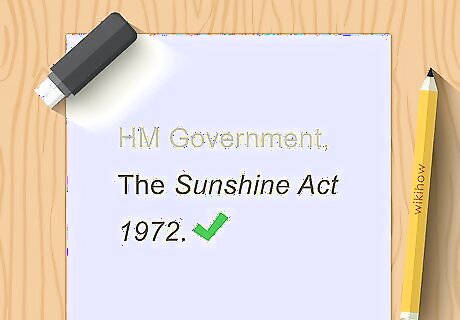
Place the name of the act and year after the government name. As you did in the text, you will put the act's name in italics, followed by the year. Add a "The" before the name of the act, but don't italicize it. So, your bibliographical reference will finish up like this one: HM Government, The Sunshine Act 1972.
Citing with Harvard Style
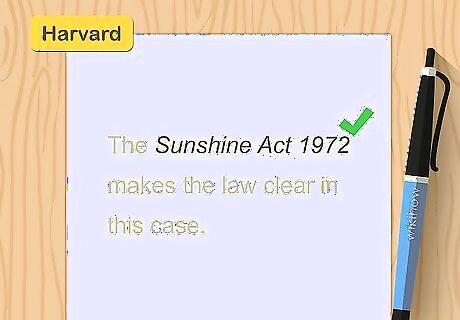
Put the name of the act and the year first for your in-text citation. Italicize the name of the act, but not the year. Also, do not italicize the "the" you use before the name of the act. For example, your citation would look like this: The Sunshine Act 1972 makes the law clear in this case.
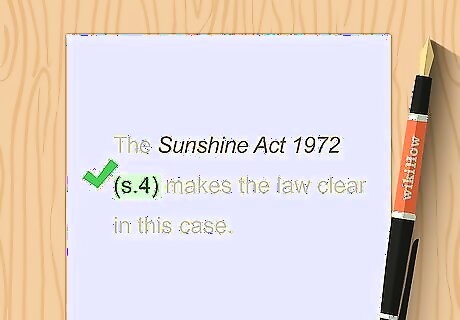
Add the section number if you'd like to make it easier for your reader. Place the section number in parentheses after the year. Use "s." followed by the number. For example, you can add the section number like this: The Sunshine Act 1972 (s.4) makes the law clear in this case.
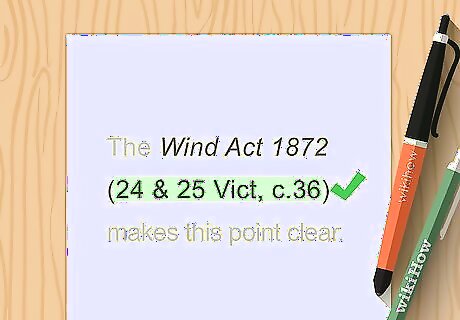
Place the volume and chapter next for acts passed on or before 1962. Before this year, acts were organized by volume based on who was reigning at the time. Put the volume number, an era abbreviation, and the chapter number in parentheses. The Wind Act 1872 (24 & 25 Vict, c.36) makes this point clear. "C" stands for "chapter," while "Vict," stands for "Victorian." If you don't know the abbreviation for the era, write in the whole name instead.
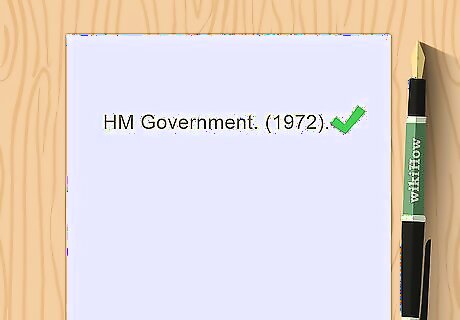
Use "HM Government" and the year to start your bibliographical citation. For your bibliography page, "HM Government," or Her Majesty's Government, stands for the author. Put a period after it, followed by the year in parentheses. Begin your reference this way: HM Government. (1972).
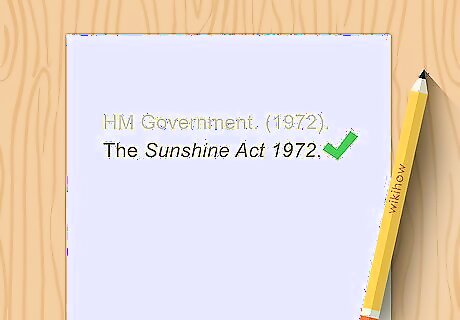
Place the name of the act after the year. Italicize the name of the act, with the exception of the "The" before the act. You should still include the year in the name of the act. Your reference looks like this now: HM Government. (1972). The Sunshine Act 1972.
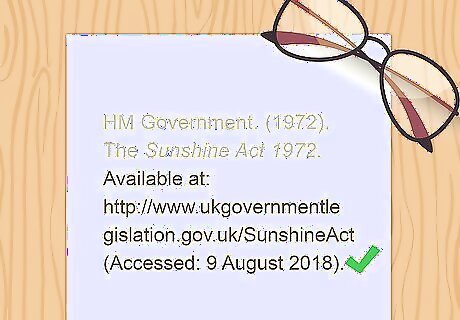
Add "Available at" and a URL to the end of the citation. If you found the act online, you should include the URL for the act. Put it after the name of act. Follow it up with "Accessed:" and the date in parentheses, starting with the day, then the month and year. Your final reference will look like this: HM Government. (1972). The Sunshine Act 1972. Available at: http://www.ukgovernmentlegislation.gov.uk/SunshineAct (Accessed: 9 August 2018).
Citing an Act of Parliament in APA
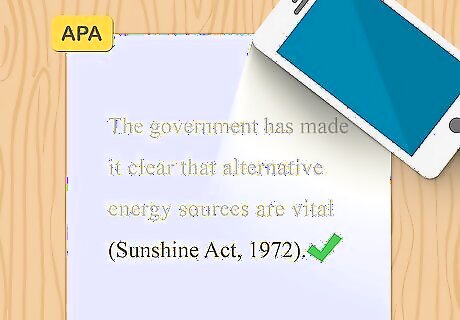
Include the name and the year for your in-text citation. Do not italicize the name of the act. Place a comma after it, and then add the year the act was passed. You can add the citation at the end of the sentence this way, using parentheses: The government has made it clear that alternative energy sources are vital (Sunshine Act, 1972). Alternatively, you can include the year in parentheses after stating the name of the act at the beginning of the sentence: According to the Sunshine Act (1972), alternative energy sources are vital.
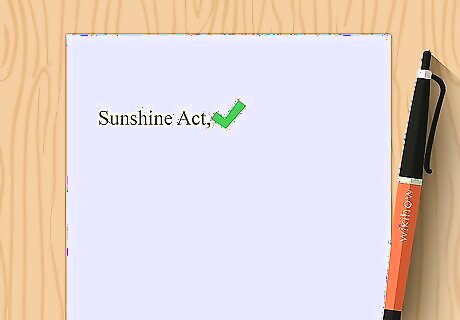
Begin with the name of the act for your bibliographical citation. Most acts don't have official authors, so you don't need to add one. Also, don't italicize the name of the act, though you should use the official name from the government. Follow it with a comma. For instance, you might write the following: Sunshine Act,
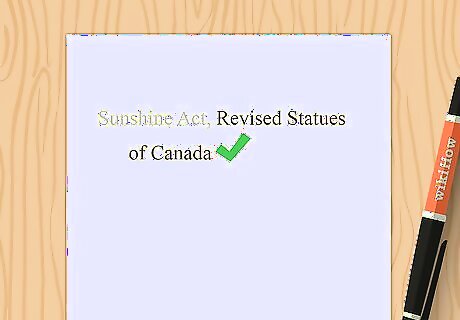
Follow the name with a comma and the name of the country's statutes. For example, in Canada, you use "Revised Statutes of Canada." This should also be capitalized. For example, your citation might look like this one: Sunshine Act, Revised Statutes of Canada
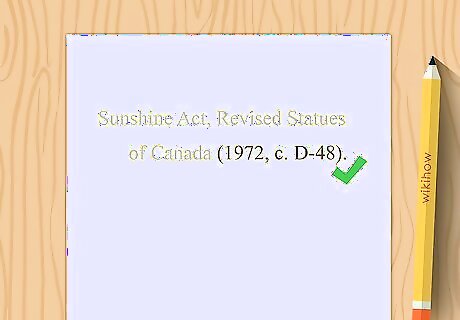
Add the year and section or chapter in parentheses. Place the year first, followed by a comma and the chapter or section. Use abbreviations, such as "c." for chapter. For instance, your reference might look like this one: Sunshine Act, Revised Statutes of Canada (1972, c. D-48).
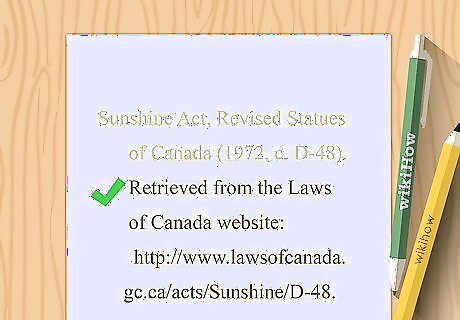
Place a period and then add the name of the website where you found it. Put "Retrieved from," the name of the website, and a colon. Then add the web address for the site. The final citation will look like this: Sunshine Act, Revised Statues of Canada (1972, c. D-48). Retrieved from the Laws of Canada website: http://www.lawsofcanada.gc.ca/acts/Sunshine/D-48.













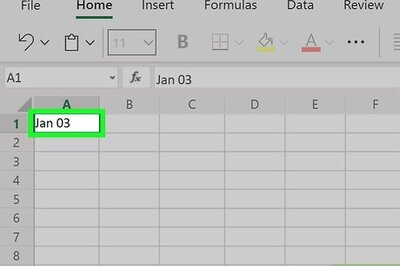





Comments
0 comment